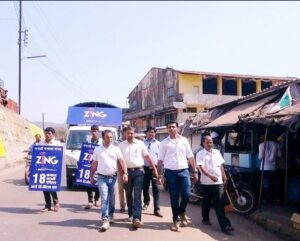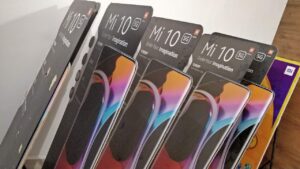Road shows bring change. Road shows connect people. Road shows set the narrative.
Road shows have been part of our culture for centuries. They take different forms in different spheres of life.
Whether it is a procession or a yatra in religious festivals, a product display on a branded vehicle in sales and marketing, or a rally in politics, they all share the same concept.
Road shows are marketing activities that demonstrate and promote a particular view. They are proven ways of scaling up anything. No wonder the French president must have been thinking that he was doing road shows since he landed in India, waving his hands to greet the people.
Politics – (you may skip this part if you don’t like politics)
Here are some examples of road shows in Indian politics:
- Dandi March, or Salt Satyagraha (1930): Led by Mahatma Gandhi, this was a 240-mile long march to the coastal town of Dandi to protest the British salt tax. This non-violent civil disobedience movement resonated with millions across India, igniting a nationwide resistance against British rule.
- Quit India Movement (1942): Another Gandhi-led movement, this demanded the immediate withdrawal of British rule from India. Though met with brutal suppression, it marked a crucial turning point in the independence struggle, mobilizing mass participation and strengthening the resolve for freedom.
- Bhakti Movement (15th-17th centuries): This socio-religious movement challenged caste hierarchies and promoted devotion as a path to salvation. Through passionate hymns, public gatherings, and yatras, Bhakti saints like Kabir, Meera, and Tukaram spread messages of inclusivity and social justice, leaving a lasting impact on Indian society.
- Non-Cooperation Movement (1920-1922): Gandhi’s call for boycotting British institutions and goods, including schools, courts, and taxes, found widespread support, crippling the colonial administration and highlighting Indian aspirations for self-governance.
- Chipko Movement (1973): Led by women in Uttarakhand, this movement embraced trees to prevent their felling by loggers. This non-violent environmental activism raised awareness about deforestation and inspired similar movements across India and beyond.
- Ayodhya Rath Yatra (1990): Led by L.K. Advani, this chariot procession across India aimed to mobilize Hindu support for the construction of a Ram temple in Ayodhya. It ignited tensions and contributed to the escalation of Hindu-Muslim conflict, eventually leading to the demolition of the Babri Masjid and further communal violence.
- Narmada Bachao Yatra (1990s): Led by Medha Patkar, this movement protested the Sardar Sarovar Dam project’s displacement of tribal communities and environmental harms. Through yatras and public pressure, they achieved significant delays and policy changes, highlighting the power of social movements.
- Bharat Jodo Yatra: Rahul Gandhi led this yatra, covering over 4,000 km across 12 states and two Union Territories. The Congress party described it as a “non-political” event.
- Chandra Shekhar’s Padyatra: In 1983, Chandra Shekhar, who later became the prime minister, undertook a padyatra from Kanyakumari to New Delhi. Despite its initial success, the impact of the padyatra was overshadowed by the assassination of Indira Gandhi and the subsequent political developments.
- Sandesh Yatra: Announced by Rajiv Gandhi at an AICC plenary in Mumbai in 1985, this yatra was carried out from Mumbai, Kashmir, Kanyakumari, and the Northeast, concluding at Delhi’s Ramlila Maidan after over three months.
- Ekta Yatra: Led by then BJP president Murli Manohar Joshi in 1991, this yatra aimed to highlight the party’s commitment to national integration and unity.
Business –

Do you know which sector provides the highest number of employment? Sales and Marketing. Yet it is perceived as a dustbin because no one wants to become a salesperson at first. But after failing to get into Medical, Engineering, Defense, UPSC, and other jobs, students end up doing sales. I am not saying this based on any data or research, but by my own experience and emotion.
Now let’s get back to the topic. (Sometimes, I go with the flow and forget the core point of the article… 🙂
Well, walking and meeting are the core of Marketing. Market means a place where people go and exchange goods, buy new products, and meet new or old sellers. They also negotiate, bargain, and experience various types of emotions from this activity. I think that is marketing. The very basic and raw definition of marketing. No AI will tell you this, that’s why you must read all my articles.
So the people who are masters of this activity or manage this entire show are called marketers. Creating new opportunities through meeting and doing market activities are generally called Road shows, Canter activity, Market Blitz, or Hallabol activities.
Why and When Road Shows happen-
- New Launches or Relaunch – When a company launches a new product or brand, they do this type of activity.
- Sales boost up – To meet Trade partners and motivate them to push the sales by recommending a particular brand or product.
- Lead Generation – To attract potential customers and collect their contact information for future follow-ups.
- Creating Awareness and building up the narrative – To spread the word about the product or brand and its benefits, features, and values.
Now I will share my experience of Road Shows, most of them from my B2C experiences from my previous organization.
- Zing Launch and Relaunch – 2015 – Market – Rest of Maharashtra and Raigad.
- Dishtv Diwali Campaign – 2016-2017-2018
- MTS Launch – 2009-2010
- Xiaomi Diwali Campaign – 2020-21 – Market- ROM
- Water Purifier Awareness – 2019 – ROWB at LG
- Retailer Scheme Awareness – 2019 at Dishtv
What was the difference? Read carefully…!
- Defined route plan to align the local sales team and markets, making them available to engage the local trade and customers.
-
Market Audit at Distributor points – Promoters were well trained to take the Product – stock details along with POSM laying at distributor points. It was a kind of audit that gave us the real-time information about the use of the precious POSM sent from the Regional office to distributor points across the region. We were able to sensitize the local team not to misuse the resources and use them effectively. I found these standees at the distributor point in Nanded while auditing by the roadshow team after the campaign had passed. This was a sheer waste of company resources, and we can control such wastages through mystery auditing
 during the roadshow
during the roadshow
- Market audit at Retailers – Taking the feedback from the market directly always helps to set the strategy and we did it through our promoters and feedback forms.
- POSM display at Retail outlets – Promoters collected the POSM and while doing the road show they also displayed it on the outlets.
- Lead Generation or Sellout – Promoters who carried the special offer with instant gifts were able to sell Dishtv connection, Zing Set-top boxes, Redmi Smart phones, and LG water purifier, which boosted the sales targets and also got support from the local team.
- Robust communication – Thanks to WhatsApp Groups, all morning, evening, and hourly information and updates were shared with the entire team and this kept them motivated. One Daily Email including all excel sheets – sellouts/lead generation, Audit reports- POSM and Stock, and Travelling details with KM and market were shared with the entire team of the previous day. Also, the same information was shared on WhatsApp- sellouts/lead generation, Audit reports- POSM and Stocks.
- Live Display – Promotion should be based on giving an experience and we took care of this. Whether it was to promote any special offer for Dishtv or Zing or to educate people on why LG water purifier is the best, we set up a live demo to run those channels on TV or pour water from the water purifier and give people a taste.
Importance of Props.
A little filter is important for life to spice it up. A few low-cost props and freebies increase the productivity and effectiveness of the campaign. They are important to communicate the message to the audience. I am sharing the list of these elements and their approximate cost.
- Roll up Backdrop and Standee: Affordable and mobile. Cost around 2700 and 1500 respectively. They are very useful for promoters to set up a small display in the market place and at the shop front.
- Placard and product cutouts – You can see in the pictures. I have used a mask of Ranveer Singh, a cutout of Petronas Tower, silver and gold coins, and offers on placards to drive the demand by promoters.
- POSM – Leaflets or low-cost one-sheeters and freebies.
What should we avoid –
This is important for marketing, commercial, and even management. Especially after me, many road shows happened in different organizations where I worked. They can go back to the files and optimize their operations.
- Vendor Selection – Thorough discussion is important before the selection. Formats, trackers, and daily reporting are very important, but most of the agencies don’t follow this. They just share the photos which have no information and value. Most of the CMOs and CEOs are reading here, just review your campaigns and ask the ROI from your marketing managers.
- Commercial negotiation – For a 15-day campaign, approximately 75,000 are enough. More than this is clearly a cut money to someone in the system.
- Sales team involvement – Every day, either a sales manager or an FOS with a distribution team should spend the day in the market with the team. We always made sure that the local team led the campaign at their respective markets.
